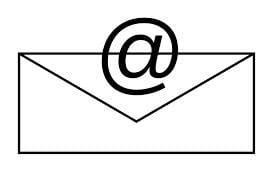
Image attribution: aliexpress.com
Do you know if your activity online is being monitored by your company? Have you been informed about privacy policies?
Thanks to Jana Rooheart of RecruitingBlogs.com we have these stats:
- 43% of USA employers track emails of their employees
- 45% use key logging
- 66% monitor Internet activities of their employees.
Rooheart informs us that, "Special software for employee monitoring (e.g., keylogger) is installed on workers’ desktops, laptops or company cell phones."
Employers may be monitoring for any or all of the following reasons:
- Checking up on employees to protect against security leaks of internal, proprietary, and/or private information or data.
- Monitoring time an employee spends "wasting time" on social networks or surfing the web. The employer then has a window into issues of productivity as well as employee effort.
- Acting as content decency police to flag and possibly discipline use of inappropriate language or the viewing of innapropriate material.
- And, in the area that interests us most here, checking to see if you are looking for another job.
As a coach and career consultant dedicated to helping clients get great new jobs, this last point is of the most interest to us.
If an employer suspects you may be looking to change jobs, s/he may react in any number of ways: do nothing, speak to you about how s/he can make your work more satisfying, reprimand you for use of company devices for private use, sideline you from key projects, or even fire you.
If you are looking, even casually, for another job, be sure to confine your related activities to a home computer or personal cell phone. I know it can be seriously inconvenient, but using any device that is on your employer's network can put a real monkey wrench into the works.






 Wondering how much recruiters are using social media to source and vet candidates? Thinking you need to get more active in social networking to grow your career?
Wondering how much recruiters are using social media to source and vet candidates? Thinking you need to get more active in social networking to grow your career?



